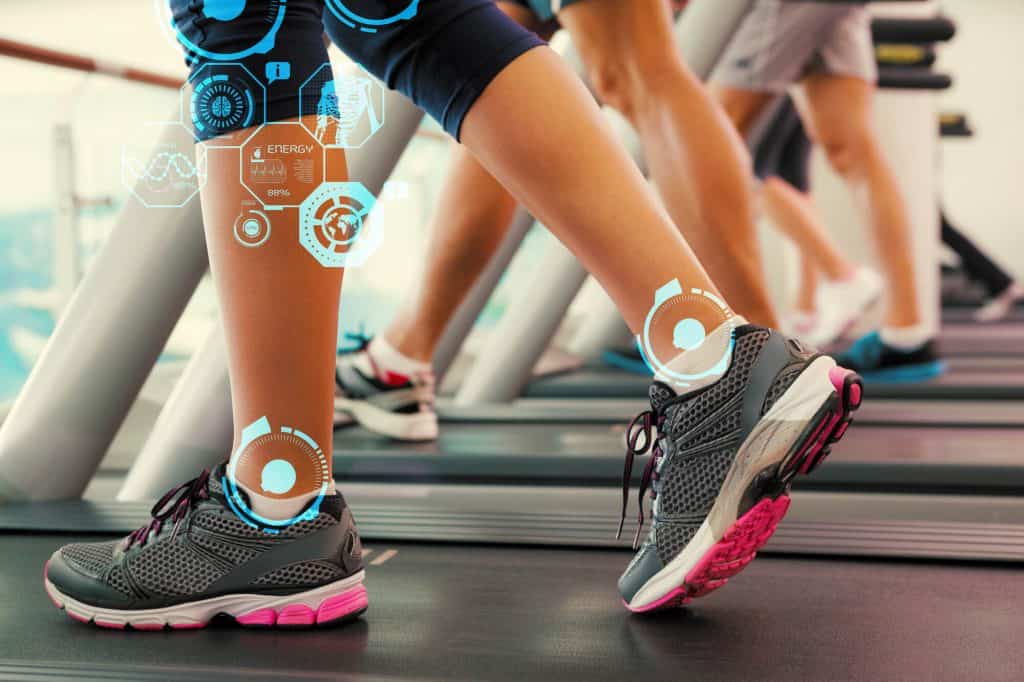How to Calculate Calories Burned Running 5 Miles
You already know that running is an excellent way to shed excess fat and stay fit. It’s also an excellent exercise to clear your mind, boost your focus, and improve your mood.
But if you’re trying to lose weight, you need to be more specific about the number of calories you’re actually burning while you’re running.
Running for 5 miles a day is a good start if you’re new to running and not that fit.
Still, you need to learn how to calculate calories burned running 5 miles to make sure that you’re working towards achieving your fitness goals.
This article will explain the mathematical formula that you should use to calculate the calories you burn during each run.
We’ll also list some factors that affect the number of burned calories, so keep on reading.
How to Calculate Calories Burned Running 5 Miles
A 5-mile run is considered a short or moderate run that most people are able to achieve with some practice.
Total beginners might need a few months, but it’s possible to reach the 5-mile mark by practicing three times a week.
The idea is to start slow with a 1-mile run and then increase your pace and distance as you gain more endurance and stamina.
Incorporating other types of exercise can also be a good idea as they help you build more muscles.
Using METs
You might be already running for 5 miles and wondering how many calories your body is burning.
For this, you need to calculate the Metabolic Equivalent of Task or MET of running.
The MET is the ratio of your working metabolic rate when compared to the resting metabolic rate.
So, it actually calculates the energy used over some time, describing the intensity of a specific exercise.
As a result, using the METs will help you understand the number of calories you’re burning while working out.
Our body cells use oxygen to create energy that fuels our muscles.
One MET represents 3.5 milliliters of oxygen per kilogram of the bodyweight used per minute.
As a result, the amount of energy your body uses while you’re resting or working out is directly related to your weight.
Other factors include age, gender, and fitness level.
A MET of 5 means that you’re exerting 5 times the effort and using 5 times the energy to work out than resting.
A higher MET means that your exercise is more vigorous because it uses more energy.
Several charts show how METs work, but these are general calculations based on a healthy adult that weighs 154 pounds.
| Physical Activity | MET |
| Walking slowly | 2 |
| Moderate intensity weight lifting | 5 |
| Cycling at a speed of 10 mph | 6 |
| Jogging at 5.6 mph | 8.8 |
| Rope jumping at 84 times per minute | 10.5 |
| Running at 7 mph | 11.5 |
| Running at 8 mph | 11.8 |
According to this table, you can calculate the calories your body will burn during 1 minute of running using the following mathematical formula.
Calories burned per minute = MET X Weight in Kilograms X 3.5/200
If you weigh 150 pounds and you’re running at almost 7 miles per hour, you can calculate the calories burned per minute using this formula.
11.5 X 3.5 X 6.8/200 = 1.3685 calories per minute.
Depending on your speed, you’ll be able to burn more calories while covering the same distance because the MET value will be higher.
A person who weighs 180 pounds will burn more calories than a person who weighs 130 pounds if they’re both running for the same distance at the same pace for the same time.
Tech Apps

In addition to this mathematical formula, there are several tech apps and tools that can help you calculate the calories you’re burning while running.
- Running apps can be easily installed on your phone to help you keep up with your running goal. The app will calculate your steps, speed, and calories burned per run. You can also access previous data to compare and evaluate your performance. The phone should be with you while you’re running to store and calculate the relevant data.
- Fitness trackers are worn like watches to allow you to check the number of calories you’re burning whenever you’re working out. The tracker can also calculate your speed, your heartbeat rate, and pulse, so you can monitor your performance and overall well-being.
- Some treadmills can count your calories while you’re running, but these numbers are usually inaccurate estimates. For more accurate results, you can choose a treadmill with a heart monitor to calculate the actual number of calories your body is burning by monitoring your heartbeats and pace. These treadmills have sensors on the handrails or come with devices that you can attach to your finger.
What Factors Affect the Number of Calories Burned Running 5 Miles?
According to the formula used to calculate the number of calories burned per run, several factors affect these results.
- The heavier you are, the more calories you burn. Since your goal isn’t to put on fats, increasing your mass muscle will eventually increase your weight, and you’ll be able to burn more calories while running for the same distance at the same pace.
- Men are likely to burn more calories than women while working out in general. This is probably related to body composition and the increased muscle mass in men. However, a woman with the same muscle mass will still burn fewer calories because of hormones and the way her body functions.
- Increasing the speed while maintaining the same distance will result in burning more calories because your muscles need to work harder.
- Your fitness level affects the number of calories you burn. For example, a fit person who runs regularly will burn fewer calories than someone who has never run before. This is because the muscles are already used to the effort, so they don’t need that much fuel to work.
- The degree of inclination will affect the number of calories you’re burning. For example, you’ll burn more calories on a steep trail than on a flat one of the same distance because your body needs to exert more effort. You’ll also burn fewer calories on your way down because gravity is working on your side.
- The nature of the running trail itself will affect the amount of effort your body needs to exert. Running on the treadmill is the easiest and will burn the fewest calories because there’s no wind resistance. If you choose to run on a sandy or muddy trail, you’ll be dealing with some resistance, and you’ll have to navigate several obstacles and use more muscles to maintain your balance, so you’ll burn more calories.
- Running in windy and cold conditions will help your body burn more calories. You need to warm up your body, so you’ll burn more calories to keep your muscles fueled throughout the run. Running in extremely hot weather will also burn more calories because your body has to produce more sweat to maintain a healthy core temperature.
How to Burn More Calories While Running for 5 Miles

In some cases, you hit a weight loss plateau, even though you’re running regularly. You might also deviate a little from your healthy diet plan, which eventually affects your weight loss result.
There are some tips and tricks that can help you lose more weight and burn more calories by slightly modifying your running practice.
Run Outside
Running on a treadmill is a lot easier than running outside, even if you can’t feel the difference instantly. The treadmill is accessible, and you can easily adjust and maintain your pace.
When you’re running outside, you have to deal with wind resistance, which means that you have to exert more effort to maintain the same pace.
At the same time, you might have to navigate your way, change direction, or jump over some obstacles to maintain your course and balance.
Moreover, it’s pretty hard to find a trail that is 100% flat throughout the whole distance, so whether you like it or not, you’ll be actually dealing with some inclination while you’re running.
Finally, most runners agree that running outside is more fun and will keep you more motivated, so you can push yourself a little further and run faster or longer to achieve your weight loss goal.
Go Uphill
Instead of running on a flat trail, burn more calories by running up a hill or a steep trail.
The idea is to move up and forward at the same time, which means that you’ll be exerting more effort and eventually burning more calories.
Each increase in the degree of inclination by 1 results in 10% more calories burned compared to running at the same pace on a flat trail of the same distance over the same period.
Running up a hill might not be that easy, especially if you’re not that fit. But you can definitely train your muscles and pump them up by incorporating a few changes into your exercise plan.
You can start running on a treadmill while increasing the inclination by 3% or 4%. The change won’t be that challenging, so you’ll be able to see how your body responds.
Try to maintain this inclination for 30 seconds or 1 minute, and then return to the flat position until your breathing returns to normal.
Repeat this 10 times during your run, and after a few weeks, you can increase the degree of inclination until your body gets used to the concept.
When you actually go outside for an uphill run, make sure that you don’t start with the most challenging trail out there.
Study your options, and pick a trail that doesn’t have many obstacles, so you can focus on your speed and breathing.
Push Yourself
Pushing yourself a little harder to run longer or faster is a sure way to burn more calories.
However, you shouldn’t just opt for a long run with no previous preparation.
The main point is to prepare your body for the challenge and increase your overall mileage by only 10% per week.
This way, you’ll be slowly but surely training your muscles without risking an injury that can put you away from the trail for months.
You don’t have to increase the distance of all your runs but start by adding half a mile to your longest run once or twice a week.
Listen to your body and stop whenever you feel pain or discomfort to prevent the risk of a severe injury.
Following the same concept, you need to take it easy if you’re trying to add more speed to your runs.
Interval running is a good option to explore because you increase your pace for a short period and then recover by running at a slow and comfortable pace.
Running at a faster speed helps your muscles grow, so they need more fuel and will eventually burn more calories to stay functional.
At the same time, interval running causes your body to burn more calories even after you’ve stopped running by increasing your resting metabolism rate.
So, you’ll be burning more calories throughout the day.
To do this successfully without risking an injury, you should start by running at your comfortable pace and then increase the pace to a comfortable hard space where you would be breathing heavily but not gasping for air.
Keep this fast pace for a minute or two, and then slow down to recover for two minutes.
Repeat this for one mile or two miles depending on your comfort level, and then finish the rest of your run at a comfortable pace.
This technique will help train your muscles to exert more effort without pushing them too hard.
If you feel that you can’t breathe or experience dizziness or extreme muscle pain, you need to stop and rest.
Stay Motivated

A good way to burn more calories by going faster and longer is to keep yourself motivated.
Boredom can hit hard while you’re running alone. Here are some tips to help you keep up with your running regimen.
- Pay attention to your surroundings, and you’ll be able to enjoy the views and eventually finish a long distance without actually noticing it.
- Use a running app to keep you motivated. You’ll appreciate your progress, which will help you go faster.
- Ask a friend or a family member to join you. Both of you will be able to keep each other motivated.
- Find a support group to work towards your running goals. You’ll be able to make new friends, and your running partners might help you with some tips.
Final Thoughts On How to Calculate Calories Burned Running 5 Miles
There are several ways to calculate the calories you burn while running 5 miles.
However, there are also different factors that affect this number, and by tweaking them, you can end up burning more or fewer calories.
Increasing your speed, running for a longer distance, or running up a hill instead of a flat trail requires your body to burn more calories.
However, you need to prepare your muscles for this change, as exerting too much effort can result in a painful injury that might take months to resolve.

